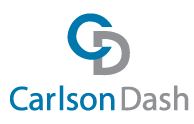According to some statistics, about 630,000 new businesses start-up each year and approximately 595,000 businesses close each year. Only about one-half of all start-ups survive to see their fourth year. The largest reason businesses fail is because of cash flow problems, a full 82% of failures are due to cash flow issues. Over 99% of America’s 28.7 million firms are small businesses. Small businesses drive the US economy.
Yet, if a small business needs to address its financial issues, such as its cash flow or its cost of goods, or its pricing it has little time and even fewer resources to do it. Consequently, a small business was left with going out of business and liquidating its assets because filing a Chapter 11 bankruptcy (which was designed for larger household named corporations like Kmart, UAL, GM, Toys R Us, Chrysler) was not a viable option for a small business fighting for survival. Small business owners cannot afford teams of lawyers, months of prolonged delays, and all of the reporting and funding that is required by a typical Chapter 11 bankruptcy case.
Congress passed a law called the Small Business Bankruptcy Act to try to alleviate the problem and to give small businesses a chance at reorganizing themselves. The law is a subset of the title 11 of the Bankruptcy Code and is designed to be cheaper, faster, and more business friendly. It is supposed to operate the way a Chapter 13 bankruptcy operates, only for businesses.
While there is a lot more to this new form of bankruptcy, this is generally how it is designed to work:
Initially, only small businesses with debt under $2,725,625 qualifies to file for this type of bankruptcy. Undoubtedly, this threshold will change over time.
Once the bankruptcy is filed, the business has 90 days to file a plan (as opposed to the 120 days in a Ch. 11). Unless good cause is shown, no unsecured creditors committee is formed. And, in another anticipated savings (of time and money) the bankrupt business does not need to file a disclosure statement and seek solicitation of votes from creditors, which can be an exhaustive process that derails many bankruptcy efforts.
In order to achieve a confirmed plan, the bankrupt business must at a minimum file and propose a plan that applies all of its disposable income toward its reasonable operating expenses and its debt. Generally speaking, the plan does not need to pay all debt in full and it can take 3-5 years to make the payments under the plan.
A standing trustee will be appointed to each small business bankruptcy case, much like a Chapter 13 standing trustee, who is charged with assuring that the business stay on track with its confirmed plan payment obligations.
This is merely an overview of the process. The devil is nearly always in the details.
For instance, how does one determine if all disposable income of a small business is being applied to a plan? If you are a creditor owed $100,000 from a small business and you see that the small business is funding the owner’s expense account that allows him to eat at only the most fabulous eateries, you might have a small problem knowing that all of that is going on while you sit there waiting to get paid a percentage of what you are owed over five (5) years. Will a trustee appointed in the case put an end to these expenses? Maybe, maybe not. A good trustee might dig into the financials and arrive at the opinion that the owner of the business uses the expense account to attract and drive business customers, or the trustee may decide there are abusive expenses occurring and seek to halt those.
This is a very new area of the bankruptcy law that will inevitably evolve. The legislation was hurriedly advanced and passed through Congress and signed into law. How this statutory framework ends up working in practice is going to be something that is learned, by everyone, along the way. We are staying on top of that learning curve, and we will help you understand how it might impact you and your business when confronted with this new form of bankruptcy.
This document is intended for informational purposes only and is not legal advice or a substitute for consultation with a licensed legal professional in a particular case or circumstance.
Kurt M. Carlson | Litigation, Corporate Transactions, Commercial Bankruptcy, Restructurings and Creditors’ Rights
Kurt concentrates his practice on representing clients in litigation, corporate transactions, commercial bankruptcy, restructurings and creditors’ rights. If you need assistance with a related matter, contact contact Kurt.


